The NVIDIA GeForce GTX 1650 Review, Feat. Zotac: Fighting Brute Force With Power Efficiency
by Ryan Smith & Nate Oh on May 3, 2019 10:15 AM ESTCompute & Synthetics
Shifting gears, we'll look at the compute and synthetic aspects of the GTX 1650. As we've seen the GTX 1660 Ti and GTX 1660 already, we aren't expecting anything too surprising here.
Beginning with CompuBench 2.0, the latest iteration of Kishonti's GPU compute benchmark suite offers a wide array of different practical compute workloads, and we’ve decided to focus on level set segmentation, optical flow modeling, and N-Body physics simulations.
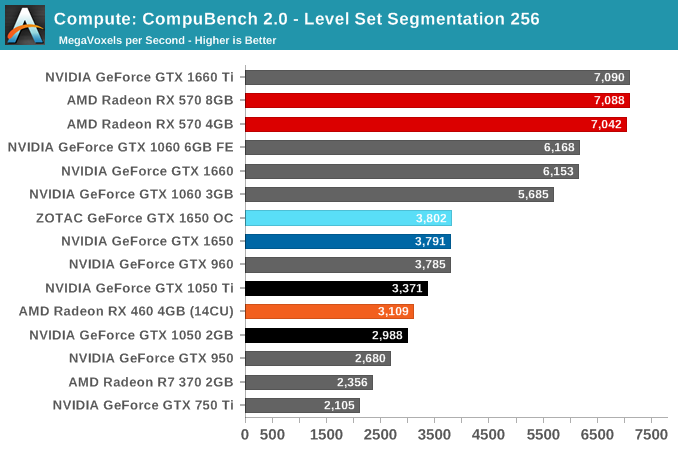
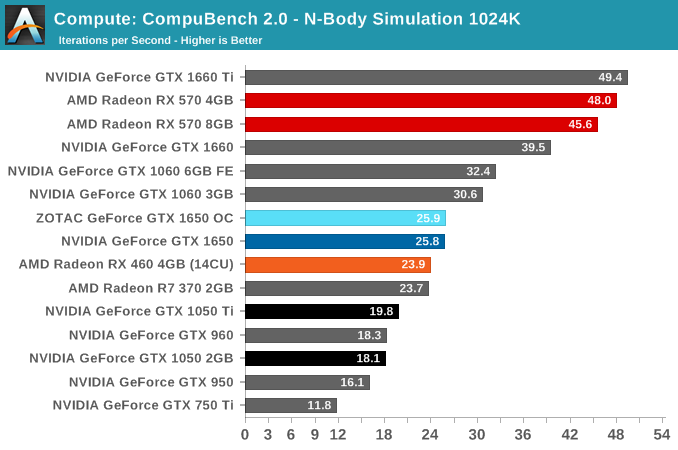
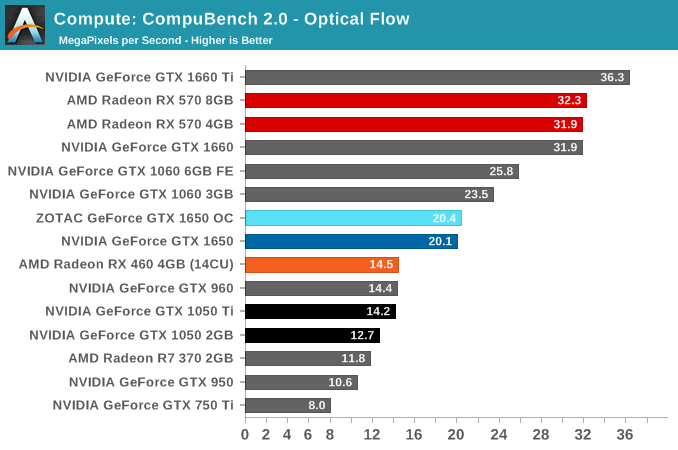
Moving on, we'll also look at single precision floating point performance with FAHBench, the official Folding @ Home benchmark. Folding @ Home is the popular Stanford-backed research and distributed computing initiative that has work distributed to millions of volunteer computers over the internet, each of which is responsible for a tiny slice of a protein folding simulation. FAHBench can test both single precision and double precision floating point performance, with single precision being the most useful metric for most consumer cards due to their low double precision performance.

Next is Geekbench 4's GPU compute suite. A multi-faceted test suite, Geekbench 4 runs seven different GPU sub-tests, ranging from face detection to FFTs, and then averages out their scores via their geometric mean. As a result Geekbench 4 isn't testing any one workload, but rather is an average of many different basic workloads.
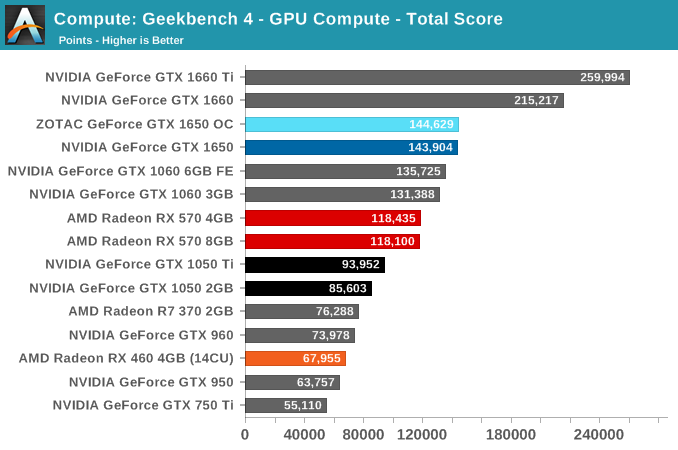
In lieu of Blender, which has yet to officially release a stable version with CUDA 10 support, we have the LuxRender-based LuxMark (OpenCL) and V-Ray (OpenCL and CUDA).
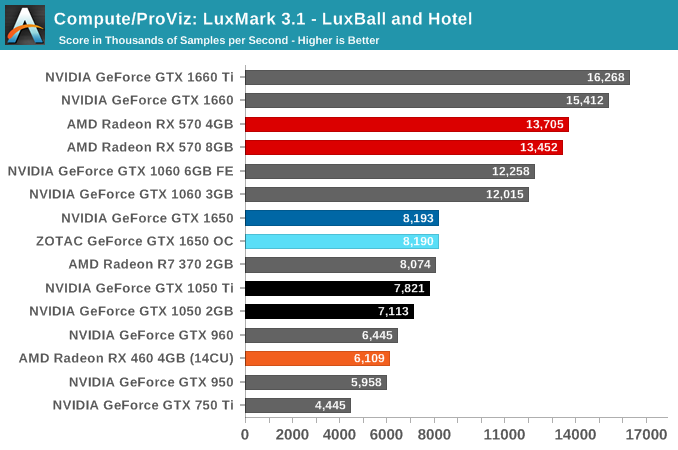
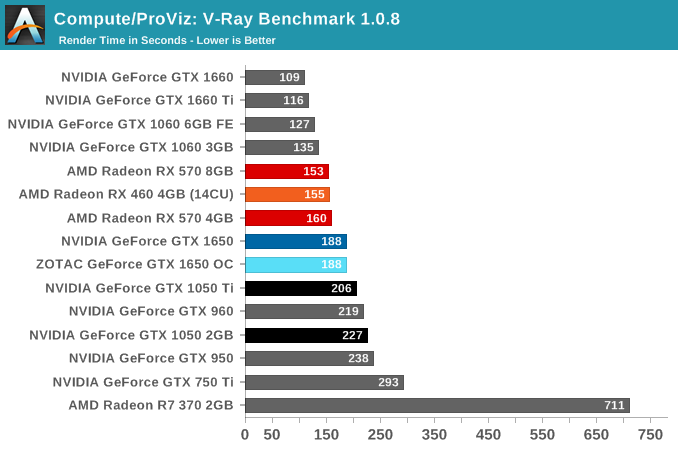
We'll also take a quick look at tessellation performance.
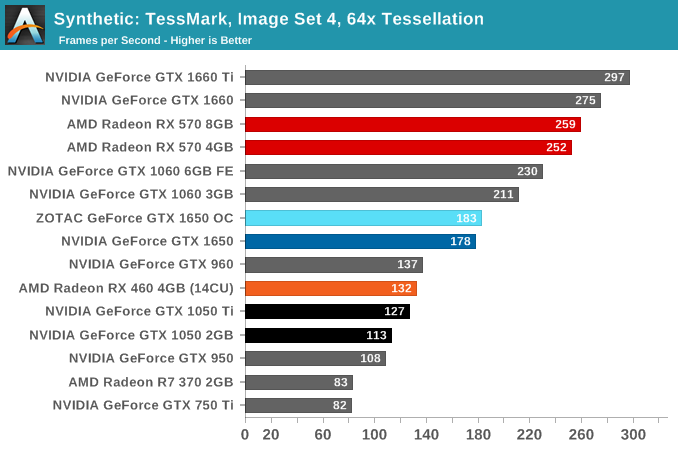
Finally, for looking at texel and pixel fillrate, we have the Beyond3D Test Suite. This test offers a slew of additional tests – many of which we use behind the scenes or in our earlier architectural analysis – but for now we’ll stick to simple pixel and texel fillrates.
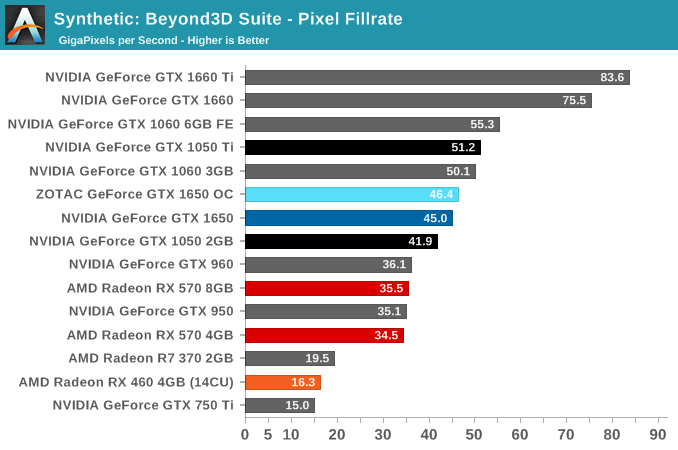

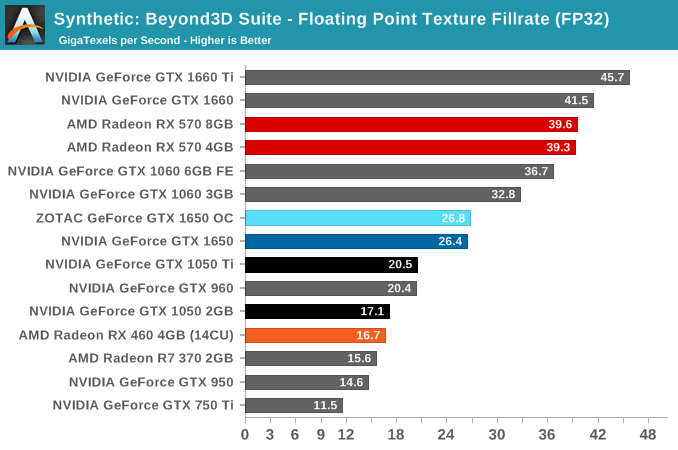










126 Comments
View All Comments
nevcairiel - Saturday, May 4, 2019 - link
A P-Frame (Predictive Frame) by definition is only in one direction - backwards. B-Frames (Bidirectional Predictive Frame) are allowed in both directions. This is an import distinction because it matters in which order those frames are put into the encoded video. "Future" frames of course need to be send first, or you can't use them for prediction.Thats where pattern like "IPBBB" come from. You start with a single I frame, a single P frame referencing that I frame (the P might be shown after some B frames), and then an array of B frames that reference both the I and P frames - and possibly each other.
P and B frames are otherwise identical in how they work. Both contain motion vectors and entropy data to correct the interpolation.
Also note that H264 already supported up to 16 reference frames for interpolation. Its called bidirectional not because its two frames, but two directions - past and future.
Opencg - Friday, May 3, 2019 - link
please include fortnight average fps over 10 hour playtime. for all cards. all on the same patch. thxBulat Ziganshin - Friday, May 3, 2019 - link
The "NVIDIA is holding back a bit" part is duplicated on pages 1 and 2Ryan Smith - Friday, May 3, 2019 - link
Whoops. That was meant to get excised when I rearranged the article. Thanks!eva02langley - Friday, May 3, 2019 - link
This card shouldn't exist.R7 was making sense because it was cheaper than a 2080, however this is more expensive than a RX 570... AND WEAKER!
Oxford Guy - Saturday, May 4, 2019 - link
It apparently exists for the GTX 960 buyers (the people who don't do their homework).eek2121 - Friday, May 3, 2019 - link
In before 1650ti. ;)AshlayW - Friday, May 3, 2019 - link
Wow. This card makes no sense. Go watch hardware unboxed's video where he conveniently shoots down the "power efficiency" argument. It's a load of rubbish, there is absolutely no reason to buy this card over even the 4GB 570, for any new gaming build. This review tried so hard to paint this turd in a positive light, continually underscoring AMD's "technological disadvantages" and "thin profit margin". P20 isn't even that much bigger than TU117 also.I'm sorry I just feel it is too friendly to nvidia and doesn't criticize this terrible product pricing enough. RX570 8GB pulse, fro sapphire is cooler running, quieter, vastly higher build quality, >10% faster, twice the vram and 135W board power, which is perfectly fine even for potato OEM builds anyway.
Seriously, drop Ty efficiency arguy. This card is DOA at 149 because 570 killed it.
1024 CC card at 130 bucks would've been passable, not this joke.
AshlayW - Friday, May 3, 2019 - link
The 570 8Gb pulse is also the same price or cheaper than 1650, at least here in the UK. Forgot to mention that important point.AshlayW - Friday, May 3, 2019 - link
Typos as I'm on my phone and I have fat fingers.Should read: "drop the efficiency argument"